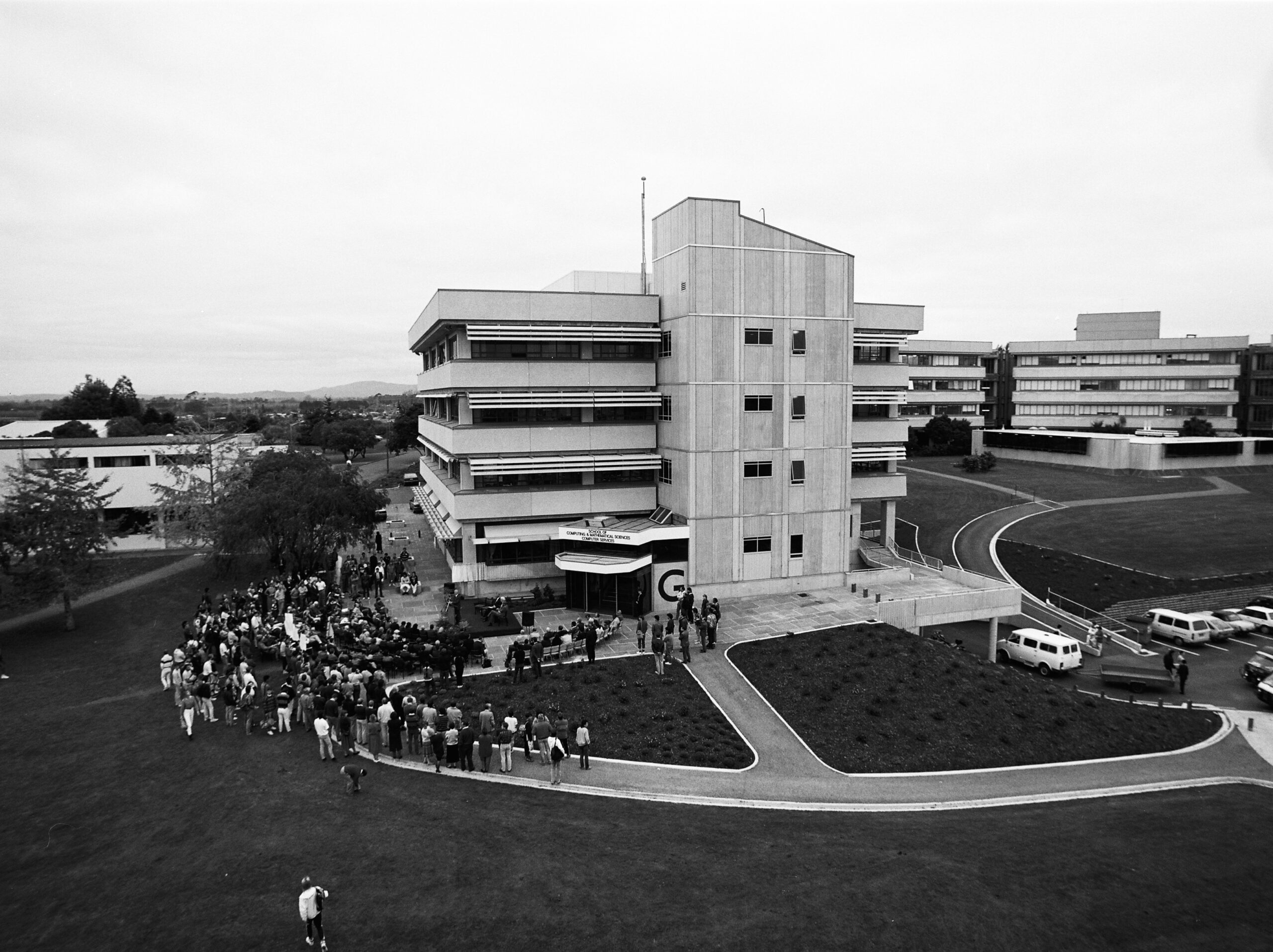50 years of Computing excellence at Waikato
This year the University of Waikato is celebrating 50 years of computing excellence. For half a century, we have been delivering exceptional teaching and conducting ground-breaking research. Our anniversary in 2023 provides a unique opportunity to reflect on our rich history and exciting future.
Head of School, Professor Annika Hinze, says the 50th is not only a time to reflect on the past and celebrate an important anniversary but an opportunity to look towards the future.
“It’s an exciting time to work in computing,” she says. “We are addressing many technological challenges such as cybersecurity, data analytics and artificial intelligence. Our researchers and students are forging new pathways in creating technology to deliver a positive impact on the world (technology for good), ensuring data sovereignty and software with positive user experiences.”

Annika Hinze is a Professor in Computer Science and Head of the School for Computing and Mathematical Sciences (CMS).
Beginnings
In 1973, the Department of Computer Science was launched at Waikato. Led by Darryl Smith, the department started with five staff and a handful of students. In 1987 it joined the Department of Mathematics and Statistics to form the School of Computing and Mathematical Sciences (CMS).
Dr Tim Stokes, Acting Head of Mathematics, says these subjects formed a natural combination, due to the similarities and importance of computing in mathematics and statistics.
Being pioneers in establishing a Department of Computer Science in New Zealand, the computing research at Waikato is now amid the best in the country. Since its inception, close to 6,000 people have graduated from the School.
Emeritus Professor Kevin Broughan established a working party with Mark Apperley, Colin Beardon, Keith Hopper, Robert Sherlock, Ian McLaren and John Turner and secured $13 million from the University to build G Block and provide a new home for the School.

The opening of G Block in 1990 – the School of Computing and Mathematical Sciences.
A Bachelor of Computer Graphic Design was introduced in 2002, and succeeded in 2018 by the Bachelor of Design. “Our unique combination between Computing and Design gives students future-focused skills to succeed in their careers,” says Dr Claire Timpany, Head of Design.
In 2003 the newly formed programme of Software Engineering welcomed its first students. Led by Professor Steve Reeves, Software Engineering received its accreditation from Engineering NZ in 2009. “The accreditation is an international stamp of high quality for teaching under the Washington Accord,” Professor Reeves says.
Today, CMS students can choose between Computer Science, Software Engineering, Design, Mathematics and Data Analytics.
Pride in 50 years of excellence
Professor Mark Apperley, who joined the University as a Computer Science lecturer in 1975, has witnessed the School’s growth firsthand.
What gives me the greatest pleasure is the quality and range of graduates we have produced, the work they have done, and the high-quality research profile we have developed, elevating our international standing
Professor Mark Apperley
Graduates have gone on to work at leading organisations including NASA, Interpol and Google, or launched local companies such as Real Time Genomics, Torutek, LuminateOne and Virscient. Prominent companies developed from research undertaken within CMS include Endace, Lightwire, and DL Consulting.
Over its 50-year legacy, Computing at Waikato has seen some remarkable achievements, including establishing New Zealand’s first Internet connection in 1989, and developing the country’s first Cyber Security Lab and Master of Cyber Security.
In 1993, Emeritus Professor Ian Witten developed one of the longest-standing machine learning systems. Now led by Professor Eibe Frank, WEKA is part of the University’s Artificial Intelligence Institute, WEKA has been downloaded more than 10 million times and been cited in more than 18,000 research and data science publications.
The School is also renowned for its open-source digital library system, Greenstone, a project led by Professor David Bainbridge. Translated into over 60 languages, the system is used worldwide, including by UNESCO and the Food and Agriculture Organization to deliver humanitarian information in developing countries. It is also used to power the National Library’s PapersPast and Heritage New Zealand’s Archaeology Digital Library.
Community and industry links
Professor Hinze says the School values local and global networks and partnerships, engaging in world-class research with international academics and fostering the next generation of technology leaders through community and industry involvement.
Staff and students have co-developed mobile applications with Māori cultural perspectives, researched online scamming vulnerability in Tongan society, and worked with Māori high school students through the Pūhoro STEMM Academy.
Postgraduate students gain experience in software engineering and human-centered computing by researching wearable technology to predict health hazards in forestry in the Hakituri project co-led by Associate Professor Judy Bowen.
Meanwhile, Associate Professor Te Taka Keegan has contributed to Microsoft and Google by researching the intersection between technology and te Reo Māori. In 2009, he worked with Google in Mountain View assisting with the Google Translator Toolkit for Māori.
Professor Hinze says Computing at Waikato has established a proud legacy of making significant contributions to research and innovation over the past 50 years.
“As the School continues to engage in cutting-edge research, it remains committed to fostering inclusivity and welcoming everyone, setting the stage for a promising future.”



